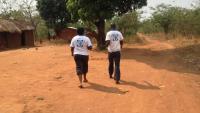Enumerating and Monitoring Vulnerable Sub-Populations

Enumerating and Monitoring Vulnerable Sub-Populations
PROGRAM FACULTY: Les Roberts, PhD
There are an unprecedented number of internally displaced persons (IDPs) across the globe, most of whom are now residing in urban environments. Urban environments pose a major challenge to enumeration and ongoing support of IDPs, which are often used by non-governmental organizations (NGOs) to inform service provision efforts: the result is that services are based on outdated and incomplete figures and crude and/or inaccurate assumptions about rates of birth or death. While surveys obtain representative samples, they are often time-consuming, costly, and fail to provide real-time data in situations of protracted crisis; in contrast, while surveillance systems provide real-time information, they are rarely complete or representative of the population. Thus, there is a need for low-cost surveillance techniques which accurately capture real-time information on IDP populations living in urban environments. This project focuses on development of a representative community-based surveillance system to monthly track rates of births, deaths, and migration of internally displaced persons living in urban centers. The project will span 5 years and three countries, and is starting in Goma, North Kivu Province, DRC. French-speaking students from the Mailman School of Public Health will be engaged in these activities in collaboration with local partners such as Rebuild Hope for Africa, which has hosted 14 Mailman students in the last five years and has been engaged in a community monitoring project in the rural area of Fizi. This project aims to explore and validate a feasible and simple system to monitor vital statistics that can track rates of success in reaching internally displaced persons living in urban environments and inform efforts to provide services to this often invisible population.